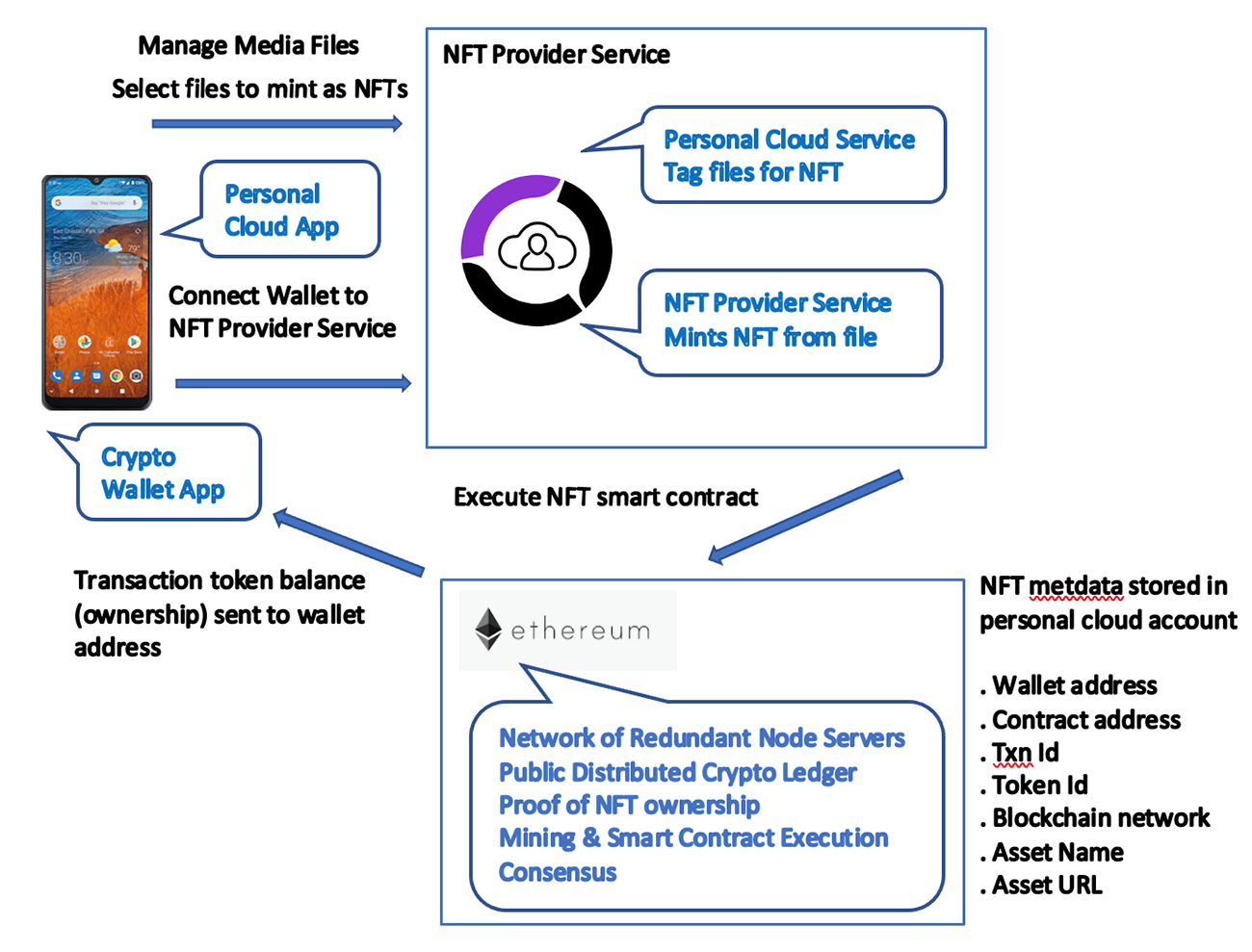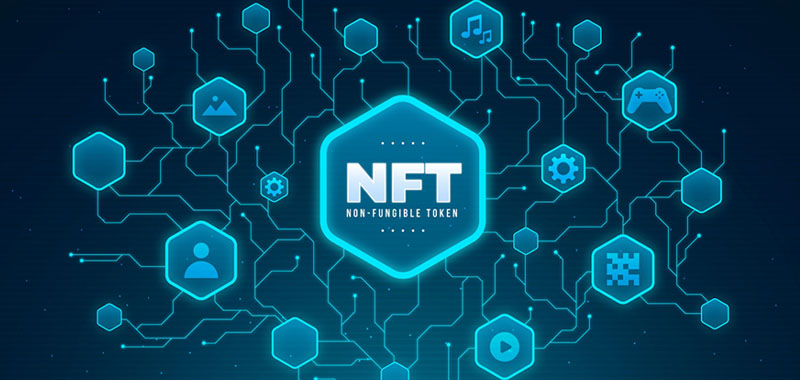With the advent of Non-Fungible or Unique tokens a new class of crypto assets was created whereby ownership of digital media can be established by linking the asset with a crypto wallet (an address denoted by a public key in a cryptographical key pair) and a transaction stored on a public cryptographical ledger (such as the Ethereum network).
Smart contracts (dApps or distributed applications) execute transactions using a verifiable and open sourced process which include transferring ownership of an NFT from one wallet to another in exchange for crypto-currency. This is proposed and implemented using the ERC721 crypto standard.
NFT’s can be used for end user media files by adding an option on the cloud service to create a digital asset (unique token) for their media files as they upload them. These digital assets would be protected from unauthorized use and can be exchanged (sold) in a marketplace of their choosing. In real terms, the NFT market value has tripled in 2020, reaching more than $250 million. During the first quarter of 2021, NFT sales exceeded $2 billion.
This presents a huge opportunity for service providers and consumers to tap into an emerging technology and find new business cases and bring new products and services to market.
Where Does The Cloud Fit In?
Today, millions of mobile users utilize carrier cloud services to store their digital media files. This is a natural fit since mobile storage is still very limited and yet transfer bandwidth is growing exponentially with the advent of 5g.
The question then becomes how can personal cloud users take advantage of NFTs to take control of their digital media files and turn them into assets they own?
Personal cloud providers can leverage open source technologies and existing blockchain infrastructure to create NFT services which allow end users to mint and manage their digital media files as assets they own. The blockchain network provides ledger and distributed application execution capability while cloud services provide the management interface and storage capability.
How Does It Work?
An end user with a personal cloud app installed on their mobile device can upload and manage media files to their cloud storage account. From there, they can select one or more files to mint as unique Non-Fungible Tokens to establish ownership of those files.
From there, the personal cloud service would submit the selected files to the NFT service. The service handles minting a single or in batch files as NFTs and can also retrieve a list of the users NFTs.
The NFT service requires the user to have an ERC721 compliant wallet (such as Metamask) on their device and the address of the wallet and proof of ownership need to be maintained in their personal cloud account as user attributes.
The NFT service uses the file location URLs and the wallet address to execute the smart contract which mints each file as an NFT and submits the transaction using the Ethereum or chosen blockchain network.
When the transaction is processed a response is sent to the NFT service from the smart contract verifying completion and providing metadata needed by the service to link the digital asset to the cloud account. The metadata can include the transaction id, wallet address, asset id (or token id), asset name, asset location (URL) and the blockchain network the contract was executed on (eg. Ethereum).
Minting an NFT Digital Asset

Other Design Considerations
Inter-Planetary File System (IPFS) is a peer-to-peer hypermedia protocol. It is also a service used to store digital media with a permanent location URL. https://ipfs.io/
IPFS has advantages over storing the actual NFT assets in the Personal Cloud in that it is a universal and permanent file storage solution that will not change over time. If a user deletes or otherwise modifies an image in their personal cloud the contract becomes invalid. Without IPFS the personal cloud where the media file is stored must ensure the integrity of the image file in case the asset is transferred or sold to another address. IPFS can be used to mitigate that problem.
I Minted My NFT. What Now?
There are several well established marketplaces where a user may list their NFTs for sale. Some examples include;
https://opensea.io/
https://rarible.com/
https://mintable.app/
However, selling your NFT doesn’t necessarily need to be the end goal. With social media platforms and tagging technology you can quickly lose control over where your digital files are shared and by whom. Having a NFT digital asset could facilitate a system whereby permission or consent must be authorized by the content owner for the file to be shared or tagged.
When an asset is shared on social media, the platform recognizes the file as an NFT asset and notification is sent to the mobile or web app for the owner to authorize.
This could be ubiquitous and work across any media platform. In essence, NFT’s can be used as a distributed digital rights management system.
Conclusion
Utilizing Non-Fungible Tokens to assign and transfer unique or scarce ownership of media and other files as digital assets may become standard practice for cloud providers. Synchronoss as a tier 1 business partner of mobile carriers that manages cloud assets for end users is well positioned to offer such a service and take advantage of future growth and business opportunities associated with the use of Non-Fungible Tokens.
